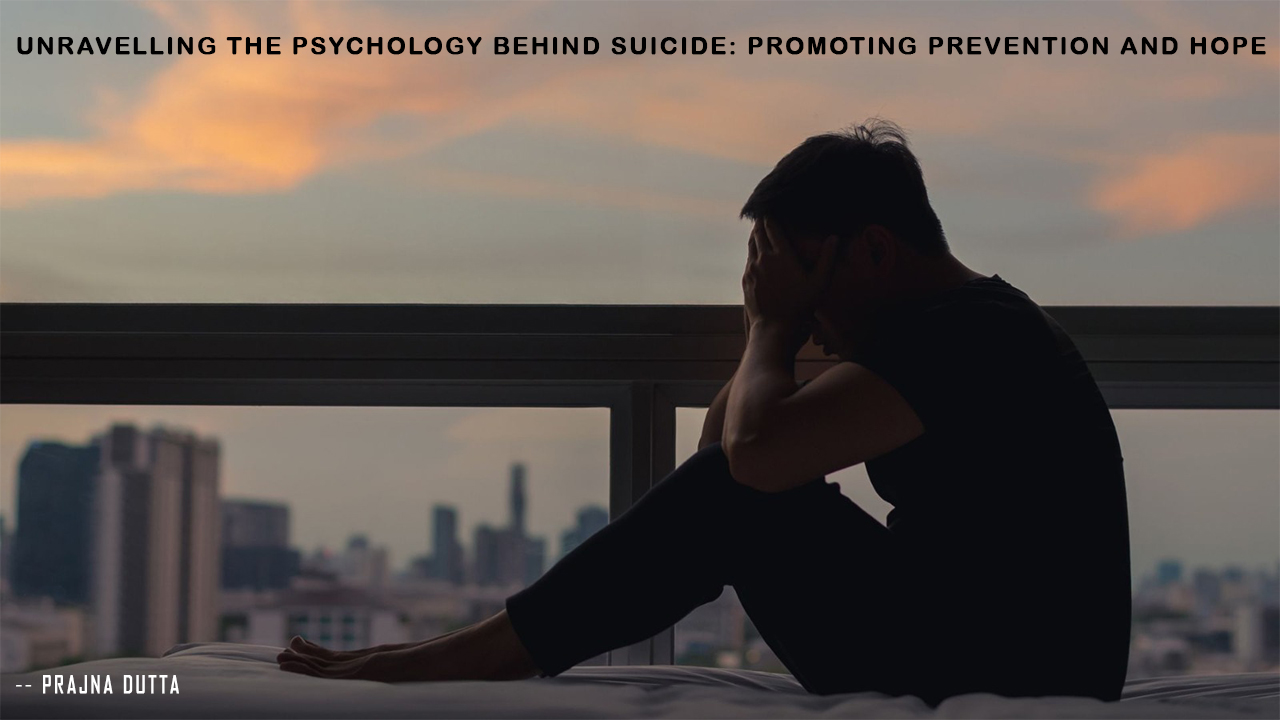Introduction:
Suicide is a complex and devastating public health issue that affects individuals and communities worldwide. Every year, millions of lives are tragically lost to suicide, leaving behind profound grief and a lasting impact on families and societies. To truly address this pressing concern, it is crucial to delve into the psychology behind suicide, recognizing the factors that contribute to suicidal ideation and understanding effective prevention strategies that can save lives. By shedding light on these aspects, we can foster a compassionate and supportive environment that promotes mental well-being and prevents suicide.
Understanding Suicide from a Psychological Perspective:
1. Mental Health Disorders and Substance Abuse:
Mental health disorders, such as depression, bipolar disorder, anxiety, and schizophrenia, are significant risk factors for suicide. These conditions can result in feelings of hopelessness, despair, and overwhelming emotional distress, which can lead individuals to contemplate or attempt suicide. Substance abuse also significantly increases the risk of suicide, as it impairs judgment, exacerbates emotional instability, and can intensify underlying mental health issues.
2. Psychosocial Factors:
Various psychosocial factors can contribute to suicidal tendencies. These may include experiences of trauma, abuse, neglect, or violence, as well as prolonged feelings of isolation, loneliness, or social disconnectedness. Relationship problems, financial difficulties, academic or professional failures, and the loss of a loved one can also trigger intense emotional distress and increase the risk of suicide.
3. Cognitive Distortions:
Suicidal individuals often experience cognitive distortions, which are negative thinking patterns that distort their perception of themselves, others, and the world around them. Common distortions include feelings of worthlessness, self-blame, and a belief that the pain will never cease. Such distorted thinking can create a sense of entrapment and fuel the desire for escape through suicide.
Prevention Strategies:
1. Enhancing Mental Health Care Access:
Improving access to mental health care services is crucial for suicide prevention. This involves reducing stigma, increasing awareness, and ensuring that mental health support is easily accessible and affordable for all individuals. Investment in mental health infrastructure, training of healthcare professionals, and integration of mental health services into primary care settings are essential steps in this regard.
2. Promoting Early Intervention:
Early identification and intervention play a vital role in preventing suicide. Mental health screenings in schools, workplaces, and healthcare settings can help identify individuals at risk, allowing for timely support and treatment. Educating individuals about the warning signs of suicide and encouraging them to seek help when they or someone they know is struggling is also crucial.
3. Building Supportive Environments:
Creating supportive environments that foster connectedness, empathy, and understanding is essential for suicide prevention. This can be achieved through community-based initiatives, support groups, and helplines. Schools, workplaces, and social institutions must prioritize mental health and provide resources for individuals in need. Encouraging open conversations about mental health and promoting active listening and empathy can contribute to a culture of compassion and reduce the stigma surrounding suicide.
4. Developing Life Skills and Resilience:
Strengthening life skills and resilience can help individuals cope with stress, adversity, and emotional challenges. Teaching problem-solving skills, emotional regulation techniques, and promoting self-care practices can empower individuals to navigate difficult situations and seek help when needed. Resilience-building programs and initiatives can be implemented in schools, workplaces, and community centers to equip individuals with the necessary skills.
5. Restricting Access to Lethal Means:
Reducing access to lethal means, such as firearms, pesticides, and medications, can be an effective suicide prevention strategy. Implementing stricter regulations, safe storage practices, and educational campaigns can help mitigate the risk of impulsive suicide attempts. For example, installing barriers on bridges and train platforms has shown to reduce suicide rates by limiting access to these high-risk locations.
6. Media Reporting and Sensitization:
Responsible media reporting is vital in preventing suicide contagion, also known as the "Werther effect." Media professionals should adhere to guidelines that avoid sensationalizing suicide, provide accurate information, and include messages of hope, resilience, and available resources. Sensitizing the media to the potential impact of their reporting can contribute to a safer environment and reduce the risk of suicide clusters.
7. Postvention and Bereavement Support:
Supporting individuals who have lost a loved one to suicide, also known as postvention, is an essential aspect of suicide prevention. Providing bereavement support, counseling services, and connecting survivors with support groups can help alleviate the profound grief and prevent the perpetuation of suicidal thoughts within affected communities.
Conclusion:
The psychology behind suicide is multifaceted, encompassing a range of factors such as mental health disorders, psychosocial stressors, and cognitive distortions. By understanding these underlying dynamics, we can implement effective prevention strategies that promote mental well-being, resilience, and hope. Suicide prevention requires a comprehensive approach involving accessible mental health care, early intervention, supportive environments, and the restriction of lethal means. By fostering a culture of empathy, awareness, and compassion, we can work towards reducing the devastating impact of suicide and providing individuals with the support they need to choose life. Remember, reaching out and offering support to those in distress can make a significant difference and save lives.

Comments